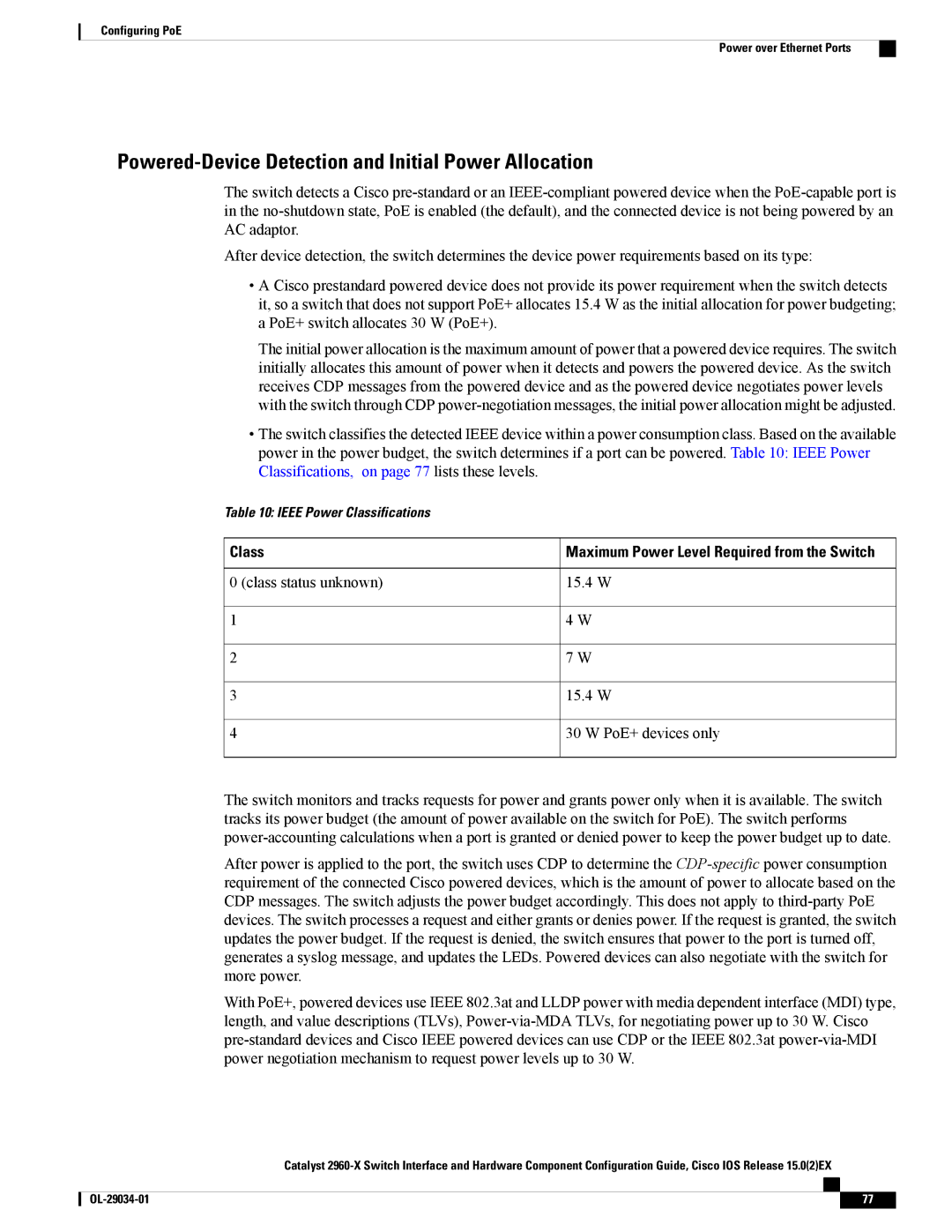
Configuring PoE
Power over Ethernet Ports
Powered-Device Detection and Initial Power Allocation
The switch detects a Cisco
After device detection, the switch determines the device power requirements based on its type:
•A Cisco prestandard powered device does not provide its power requirement when the switch detects it, so a switch that does not support PoE+ allocates 15.4 W as the initial allocation for power budgeting; a PoE+ switch allocates 30 W (PoE+).
The initial power allocation is the maximum amount of power that a powered device requires. The switch initially allocates this amount of power when it detects and powers the powered device. As the switch receives CDP messages from the powered device and as the powered device negotiates power levels with the switch through CDP
•The switch classifies the detected IEEE device within a power consumption class. Based on the available power in the power budget, the switch determines if a port can be powered. Table 10: IEEE Power Classifications, on page 77 lists these levels.
Table 10: IEEE Power Classifications |
|
Class | Maximum Power Level Required from the Switch |
0 (class status unknown) | 15.4 W |
1 | 4 W |
2 | 7 W |
3 | 15.4 W |
4 | 30 W PoE+ devices only |
The switch monitors and tracks requests for power and grants power only when it is available. The switch tracks its power budget (the amount of power available on the switch for PoE). The switch performs
After power is applied to the port, the switch uses CDP to determine the
With PoE+, powered devices use IEEE 802.3at and LLDP power with media dependent interface (MDI) type, length, and value descriptions (TLVs),
Catalyst
77 |
